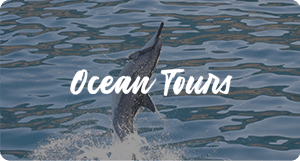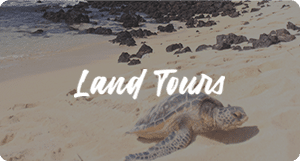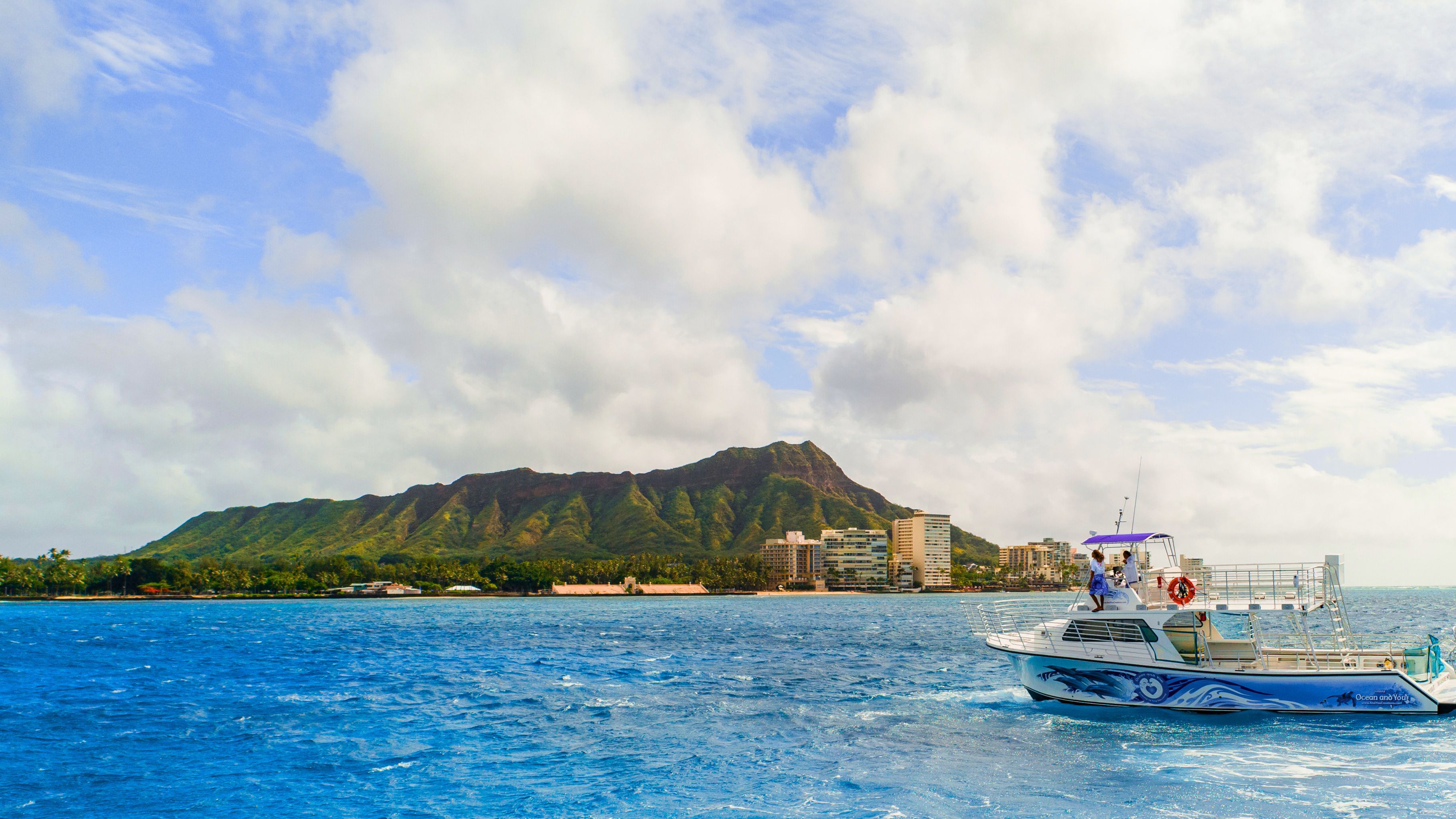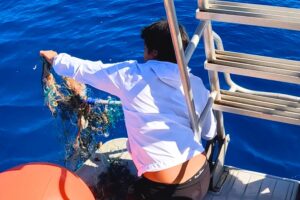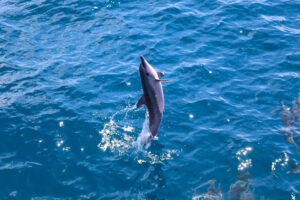Oahu, renowned for its breathtaking landscapes and vibrant cultural heritage, features landmarks with names rich in meaning. Understanding the Hawaiian names of Oahu landmarks not only enriches your visit but also connects you to the island’s heritage.
Here’s a look at the Hawaiian names of Oahu landmarks and the meanings behind four iconic sites.
1. Diamond Head – Lē’ahi
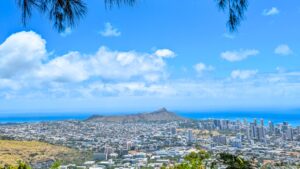
Known in Hawaiian as Lē’ahi, which translates to “brow of the tuna”, this volcanic crater has a rich cultural history. The name Le’ahi is said to have been given by Hi‘iaka, the sister of the fire goddess Pele, because the summit of the crater resembles the forehead (lae) of the ‘ahi (tuna) fish. Another translation of Leahi is “fire headland,” referencing the navigational fires lit at the summit to assist canoes traveling along the shoreline.
In ancient times, a heiau (Hawaiian temple) was built on the summit dedicated to the god of wind, serving as protection against strong updrafts that could extinguish these crucial navigational fires. Today, the Diamond Head Light, constructed in 1917, continues to provide a visual aid for navigation.
Also, formed more than 100,000 years ago, Leahi was named Diamond Head by 19th-century British sailors who mistook shiny calcite crystals on the crater’s slopes for real diamonds. Though these “diamonds” were of no value, the name stuck. In the early 1900s, the crater was used as a strategic military lookout and was designated a National Natural Landmark in 1968. Today, Leahi is a popular hiking destination, offering panoramic views of Waikiki and Oahu’s south shore.
*Note: If you’re planning to hike the Diamond Head trail, a reservation is required. Please visit the Diamond Head State Monument website for details on how to make a reservation.
And You Creations offers the Free Trolley ride between the Diamond Head and Waikiki. (*Offer as of September 2024. Subject to change without notice.)
*Important Notice:
Starting from September 23, 2024, our free Turtle Trolley service will change.
Guests participating in any And You Creations tours can continue to use our Turtle Trolley service FREE of charge. Guests who are not participating in our tours but would like to use the trolley will receive a free one-day trolley ticket.
【Important Announcement】
*We would like to express our heartfelt gratitude for your continued support of our free trolley service. Unfortunately, this service will be discontinued on 1/31/2025. Thank you so much for using our service over the years! We are currently preparing a new service, and we will share more details as soon as they are finalized. Please stay tuned and look forward to it! 😊
2. Mount Tantalus – Pu’u ‘Ualaka’a
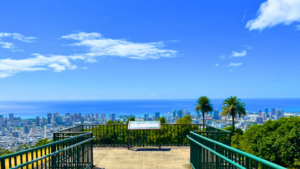
Rising above Honolulu, Mount Tantalus is known as Pu’u ‘Ualaka’a in Hawaiian, which translates to “hill of the rolling sweet potato”. This name reflects the area’s historical use for sweet potato cultivation, an important crop for Native Hawaiians.
Early Hawaiians grew taro in the swampy areas near the mouth of the valley, where water from Tantalus flowed, and on small flat lands along the streams. The taro fields extended into the nearby valleys of Manoa and Pauoa. According to legend, sweet potatoes were grown on Round Top, which is called Puu Ualakaa in Hawaiian, meaning “hill of the rolling sweet potato”.
The lush greenery and winding roads of Puu Ualakaa make it a favorite spot for both locals and visitors. The lookout provides sweeping views of Honolulu with Diamond Head in the background, as well as the surrounding landscape—ideal for relaxing and taking in the scenery.
On our Nature & You Manoa Falls Hike Tour, we visit Puu Ualakaa Park to enjoy the view and lunch. As only a select few companies hold the special permit required to access this exclusive area, our tour offers you a unique and premium experience!!
3. Mānoa Falls – Waihī Nui

Hidden in Manoa Valley, Waihi Nui (commonly known as Manoa Falls) is a serene waterfall offering a peaceful retreat into nature. The name Waihi Nui means “great gushing water,” but it can also be translated as “big water” or “large stream,” perfectly describing the waterfall’s majestic cascade, especially after rain.
Mānoa can be translated to mean “thick,” “solid,” “vast,” or “depth” in Hawaiian. The term is commonly used to describe areas with dense vegetation or deep valleys. For Mānoa Valley on Oahu, the name aptly reflects the valley’s lush, verdant landscape.
Our Nature & You Manoa Waterfall Hike Tour takes you through lush rainforest in Waihi Nui, where you’ll be enveloped by the sights and sounds of the tropical environment. It’s an excellent spot for those seeking tranquility and a deeper connection with Hawaii’s natural beauty.
4. Makapu’u Point

Located on the eastern tip of Oahu, Makapu’u means “bulging eye” in Hawaiian. According to Hawaiian legend, Makapu’u was a Tahitian god with eight bright eyes who lived in a cave in the area. The point features a popular lighthouse hike and offers breathtaking views of the ocean. Makapuu is also a popular site for whale watching during the winter months, from mid-December to the end of March, when humpback whales migrate through the area.
Our Island & You Oahu Circle Island Tour stops at Makapuu Lookout, providing a fantastic opportunity to take in the views. For those interested in seeing whales up close during the winter season, we offer a Oahu Whale Watching Tour as well!
By exploring the Hawaiian names of Oahu landmarks, you gain a deeper appreciation for Oahu’s rich cultural tapestry. Each name tells a story, adding a meaningful layer to your visit and enhancing your connection to this beautiful island.
⭐️ If you are interested in these tours we offer, please check all And You Creations Tours by clicking here!






